- Home
- Nathaniel Philbrick
Second Wind
Second Wind Read online
PENGUIN BOOKS
SECOND WIND
Nathaniel Philbrick is the New York Times bestselling author of Valiant Ambition, winner of the George Washington Prize; In the Heart of the Sea, winner of the National Book Award; Mayflower, finalist for the Pulitzer Prize; Sea of Glory; The Last Stand; Bunker Hill; Why Read Moby-Dick?, and Away Off Shore. He lives on Nantucket Island.
ALSO BY NATHANIEL PHILBRICK
VALIANT AMBITION:
George Washington, Benedict Arnold, and the Fate of the American Revolution
BUNKER HILL:
A City, a Siege, a Revolution
WHY READ MOBY-DICK?
THE LAST STAND:
Custer, Sitting Bull, and the Battle of the Little Bighorn
MAYFLOWER:
A Story of Courage, Community, and War
SEA OF GLORY:
America’s Voyage of Discovery; The U.S. Exploring Expedition, 1838–1842
IN THE HEART OF THE SEA:
The Tragedy of the Whaleship Essex
ABRAM’S EYES:
The Native American Legacy of Nantucket Island
AWAY OFF SHORE:
Nantucket Island and Its People, 1602–1890
THE PASSIONATE SAILOR
(illustrated by Gary Patterson)
PENGUIN BOOKS
An imprint of Penguin Random House LLC
375 Hudson Street
New York, New York 10014
penguin.com
First published in the United States of America by Mill Hill Press 1999
Published in Penguin Books 2018
Copyright © 1999 by Nathaniel Philbrick
Penguin supports copyright. Copyright fuels creativity, encourages diverse voices, promotes free speech, and creates a vibrant culture. Thank you for buying an authorized edition of this book and for complying with copyright laws by not reproducing, scanning, or distributing any part of it in any form without permission. You are supporting writers and allowing Penguin to continue to publish books for every reader.
Illustrations by Laura Hartman Maestro
LIBRARY OF CONGRESS CATALOGING-IN-PUBLICATION DATA
Names: Philbrick, Nathaniel, author.
Title: Second wind: a sunfish sailor, an island, and the voyage that brought a family together / Nathaniel Philbrick.
Description: New York, New York: Penguin Books, an imprint of Random House LLC, 2018. | First published in the United States of America by Mill Hill Press 1999.
Identifiers: LCCN 2017024034 (print) | LCCN 2017055169 (ebook) | ISBN 9780525503835 (ebook) | ISBN 9780143132097
Subjects: LCSH: Philbrick, Nathaniel. | Sailors—Biography. | Sailboat racing.
Classification: LCC GV810.92.P52 (ebook) | LCC GV810.92.P52 A3 2018 (print) | DDC 797.1092 [B]—dc23
LC record available at https://lccn.loc.gov/2017024034
Cover design: Jason Ramirez
Cover painting: Sunfish at Head of Hummock Pond by Illya Kagan © 1997
Version_1
To Melissa, Jennie, and Ethan
Contents
About the Author
Also by Nathaniel Philbrick
Title Page
Copyright
Dedication
Author’s Note
Map of Nantucket
Prologue
Part I: A Pool in the Stream
The Race
Up a Creek
In a Bog
The Green Gush
Love’s Handiwork
Time Travel
The Suit
Steering Without a Rudder
Death Roll: Coskata
In the Cocktail Glass
Strolling Through History
The Jibing Hamster
Coastal Retreat
Dancing with Seals
Part II: This Is Only a Test
Details
A Different World
Into the Maelstrom
Roll Call
Over Early
What Ifs
Part III: The Swift Monster
Oedipal Sailing
The Prop
Pre-Cut
Power in the Pond
The Cut
Part IV: Down the River
Reassembling Childhood
Logistics
Rollin’
The Deluge
Sail to the Sea
Part V: Showtime
In Limbo
Taking Measure
Doppelgänger
The Ultimate Captain’s House
Day One
Day Two
Day Three
Epilogue
Acknowledgments
Author’s Note
I NEVER THOUGHT I would have a midlife crisis. As far as I was concerned, all of life was a crisis. To point to a single event as the defining moment of one’s middle age was either a baby boomer’s self-dramatization or, at the very least, wishful thinking. Doesn’t the word “midlife” imply that you’ve got more than a few good years left?
I’ve now come to realize that the events described in this book, all of which occurred between the spring of 1992 and the fall of 1993, constituted, if not a crisis, a kind of watershed. Before that year, I was a stay-at-home dad who only got out of the house to take my two kids to the playground. While I considered myself lucky to be with my children every day, I had lost almost all touch with sailing, the sport that had once meant everything to me.
Then everything changed. For reasons I’m still trying to understand, I decided to take another shot—maybe one last shot—at the Sunfish championship I’d won fifteen years before. I began an odyssey that led me from the lonely ponds of Nantucket Island to a humbling return to competition in Florida, then down the Connecticut River with my family before I headed out to a steamy lake in Illinois for the North American championship. In the end it brought me home, to Nantucket. That all this happened while I was working on a history of the island called Away Off Shore—a book that tells of a place experiencing its own midlife crisis—makes me scratch my ever-lengthening forehead and admit that, well, maybe its author was having one, too.
* * *
NOW, twenty-five years later, my wife Melissa and I still live on Nantucket. Although I have long since donated my Sunfish to the island’s community sailing school and we recently traded our beloved Beetle Cat for a more comfortable Herreshoff 12½, we still sail every chance we get. Our daughter Jennie grew up to be a highly competitive Laser sailor and was a member of a nationally ranked sailing team in college. Our son Ethan, never a serious racer, has become the most adventuresome mariner of us all, whether it’s circumnavigating Cape Cod in a small cruising boat or dodging the tugs on the Hudson River in a J/24. Just last summer, I’m happy to report, Melissa and I took our two-year-old granddaughter Lydia on her first sail across Nantucket Harbor.
Many of the books I’ve written since the publication of Second Wind in 1999 are about America’s relationship to the sea. This is the book with which I explored my own relationship to both salt and fresh water, and I hope you enjoy the voyage.
—NATHANIEL PHILBRICK
Nantucket, April 2017
Prologue
MY CHILDREN GLARED AT ME. What they saw was pathetic: their thirty-six-year-old father watching television on a weekday afternoon. It wasn’t Oprah or Geraldo or Donahue. It was worse. I was watching the America’s Cup on ESPN.
The thing of it was, I hated the America’s Cup. Having grown up racing little sail
boats on little lakes, I had nothing but contempt for what the announcers kept calling “the holy grail of sailing.” To self-styled purists like me, the Cup was more about money and ego than wind and water. If there was an essence of sailboat racing, the America’s Cup had moved about as far away from it as San Diego was from Newport.
Then what was I doing in front of the television?
The kids wanted to watch The Mickey Mouse Club, but I wasn’t about to surrender the remote control. As a parent I could decree it was my turn, not theirs. The race might not even be close, but I was going to see the finish.
It was a contest of wills, and I was going to win.
“Dad,” said nine-year-old Jennie, “get a life.”
“Yeah,” added six-year-old Ethan as the two of them turned and headed out the door. So there.
I tried to concentrate on the television screen, but something nibbled at me, made me shift restlessly on the couch as the two giant yachts glided across the nearly windless Pacific Ocean.
Maybe it was time for some fresh air.
The kids had gone off to play Frisbee in the backyard. They had already forgotten about the scene in the living room, but I hadn’t. Although they let me join their game, it wasn’t long before my attention drifted toward the side of the house where my old yacht, a dirt-encrusted Sunfish, leaned against the foundation.
If an America’s Cup boat is a Ferrari, a Sunfish is a VW Bug. Some would not even call it a sailboat—just a piece of recreational equipment. Real yachtsmen like Sir Thomas Lipton and the Vanderbilts wouldn’t have been caught dead in a Sunfish. The boat is so mundanely bourgeois that John Updike used one to kill off his middle-class archetype, Rabbit Angstrom.
But to me a Sunfish was more than a water toy. It might be ugly—an ironing-board hull with an isosceles-triangle sail—but a Sunfish is fast. When I sailed a Sunfish for the first time at the age of fourteen after two years of poking around in an eight-foot pram, I felt like I had traded a paddleboat for a torpedo boat. No wonder Jack Kennedy sailed these boats. There’s even a picture of him on a Sailfish, the Sunfish’s even more humble predecessor, sporting the same grin he flashed from the bridge of PT-109.
The notion of racing a Sunfish might have struck even the classy JFK as absurd. It’s low to the water, it’s wet, it’s . . . undignified. But for me in 1970, a teenager in desperate need of an escape from all the land-based problems of the world, there had been something elemental and all-consuming about a Sunfish. Nothing could compare to the exhilaration of a close race in a real blow—the wind howling and spray flying as my Sunfish and I punched through the waves to the finish.
But on that spring afternoon in 1992, Sunfish racing seemed about as irrelevant to my life as the America’s Cup. Instead of a sailboat, this sap-spattered fiberglass hull, unused in more than a decade, looked like a beat-up luggage pod waiting to be clamped to the roof of a minivan.
By that point I’d abandoned Frisbee and was standing beside the Sunfish. Eventually the kids wandered over to see what I was up to.
“Give me a hand,” I said.
I grabbed the Sunfish’s gunwale, Jennie took the stern, and Ethan wrapped his little fingers around the handle at the bow. Together, we lowered the hull onto the grass, right side up. What had been nibbling at me while I watched the America’s Cup turned into a stabbing pain in my gut.
Scribbled across the deck in grease pencil were the compass headings from my last big regatta: the 1978 North American championship, the highlight of my sailing life, when at twenty-two years of age I had eked out a narrow victory over 178 of the most competitive Sunfish sailors on the continent. Although I had sailed and even raced the boat a few times since then, I had never let myself erase those hieroglyphics with their mystical significance to my golden age.
A car pulled into the driveway. It was Melissa—my wife, the kids’ mother—returning from a day at the office. Jennie and Ethan ran up to greet her, and soon all four of us were staring at the Sunfish.
“What are you going to do with that?” she asked.
Melissa had also been a sailor. In fact, we had met as sailing instructors at a yacht club on Cape Cod. From the beginning, however, there had been profound differences in the way we approached the sport.
Although Melissa had been an extremely talented sailboat racer who had finished second in the 1981 Women’s Sunfish North Americans, she never seemed to take it terribly seriously. Sailing was just one of the many things she had done well as a teenager growing up on Cape Cod.
For me, on the other hand, sailboat racing had been more like a personality disorder. By some cruel twist of fate, my father’s search for tenure as an English professor had marooned our family in Pittsburgh, Pennsylvania, but that only made me more stubbornly committed to becoming a world-class sailor. Whether it was on the Monongahela River or a man-made lake, I spent just about every weekend jousting against my younger brother Sam in a Sunfish.
In high school I was one of three thousand students and painfully shy. In a Sunfish, however, my inhibitions dissolved. With a mainsheet in one hand and a tiller extension in the other, I attacked each race with a passion that only my brother and my parents truly appreciated. During the summer of 1974, my fervor grew to include a girl named Melissa with blond hair, blue eyes, and a sunburned nose. And on a cool, foggy night in August, we ended up together in the cockpit of her family’s Beetle Cat, the same kind of 12½-foot sailboat in which both my parents had learned to sail a generation earlier. An eighteen-year-old misfit from Pittsburgh felt as if he’d finally found the place where he belonged.
The following year, Melissa and I, by then a confirmed couple, drove out to a Sunfish dealer in Springfield, Massachusetts. After an unsatisfactory fling with a flashy Olympic-class dinghy, I had decided to return to the boat that had given me my real start. Although Melissa was sometimes bewildered and even frightened by the way I acted around sailboats, she had come to regard my behavior as a kind of insanity that, if not treatable, was at least temporary. That afternoon in Springfield, however, everything was delightfully calm as the two of us wandered hand in hand through a yard full of brand-new Sunfish, in search of the perfect hull.
Seventeen years later, here we were, assembled around that same boat. Needless to say, it no longer looked perfect.
“Why don’t you ever sail it?” Jennie asked.
It was a good question.
Not long after Jennie’s birth, I had made the decision to pursue a writing career at home. Life became a blur of doctor appointments, diaper changes, deadlines, and rewrites. The prospect of doing anything that did not somehow revolve around writing or around the schedules and needs of Jennie and Ethan became unimaginable. My sailing exploits seemed to have been performed by another person a long time ago. I took it for granted that the self-absorption sailing required of me would have been toxic to the life I now led. I dared not even talk about those days out on the water, as if the mere mention of a sailboat might puncture the cocoon of domesticity I had so carefully spun for myself. Just look at what havoc one televised race had wreaked.
Jennie said it. “You should sail again, Dad.”
I turned to Ethan. “What do you think?” I could feel Melissa’s eyes studying me.
Ethan shrugged. “Sure,” he said.
I began to wonder: Could I climb back into the cockpit of this beat-up old boat and still be the father and husband I had always been? Was this what I needed to “get a life”?
PART I
A Pool in the Stream
Take almost any path you please, and ten to one it carries you down in a dale, and leaves you there by a pool in the stream. There is magic in it. Let the most absent-minded of men be plunged in his deepest reveries—stand the man on his legs, set his feet a going, and he will infallibly lead you to water, if water there be in all that region. Should you ever be athirst in the great American desert, try this
experiment, if your caravan happen to be supplied with a metaphysical professor. Yes, as every one knows, meditation and water are wedded for ever.
—HERMAN MELVILLE, Moby-Dick
The Race
I SHOULD HAVE KNOWN BETTER. You can’t just “get” a life.
Six years earlier Melissa and I had tried to do exactly that by moving to the island of Nantucket, twenty-four miles off the New England coast. We had grown tired of living and working around big cities; we wanted more time with our children and with each other; and besides, back then we had both hoped to sail again. Perhaps on Nantucket, once the mother ship of American whaling, we could create an environment for our children in which we were all, figuratively, if not literally, in the same boat.
But it didn’t start out the way we had planned. Melissa soon found that life as an attorney on a real-estate obsessed island was as demanding as it had been in the city. For my part, being a housebound writer and parent on relatively tiny Nantucket was even more claustrophobic than it had been in the suburb we had previously called home. An island is a tough place to be landlocked.
But there was more to it than that. Something dark and disturbing would occasionally punch through the surface, reveal just a hint of its massive, lugubrious bulk, then vanish again, only to reappear at the strangest of times. I began to sense that something weird, huge, and scary was, well, out there. And then one February afternoon I saw it—a whale.
It had been back in the days when Ethan still fit comfortably on my shoulders. We were on one of our daily walks along the south shore of the island when the kids and I found ourselves on a bluff overlooking a winter beach and a crowd of people clustered around the black lifeless shape of a young humpback, less than twenty feet long. In her death spasms she’d vomited her stomach lining, and the placenta-like mess floated in the waves beside her. Two men with clipboards and waders measured the carcass and took notes. Children clambered over the whale’s smooth, rubbery body, bouncing on her upturned belly as if she were a trampoline. That February afternoon, with my daughter beside me and my son perched on my shoulders, I first realized that it was time for a change. Like that youthful whale, I was stranded. At some point, I would have to return to the sea.

 Bunker Hill: A City, a Siege, a Revolution
Bunker Hill: A City, a Siege, a Revolution Why Read Moby-Dick?
Why Read Moby-Dick?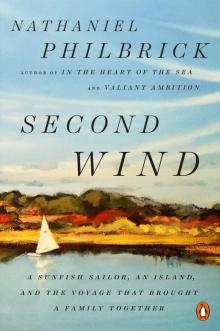 Second Wind: A Nantucket Sailor's Odyssey
Second Wind: A Nantucket Sailor's Odyssey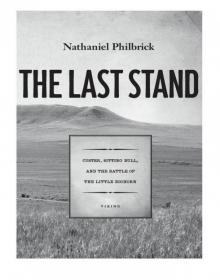 The Last Stand: Custer, Sitting Bull, and the Battle of the Little Bighorn
The Last Stand: Custer, Sitting Bull, and the Battle of the Little Bighorn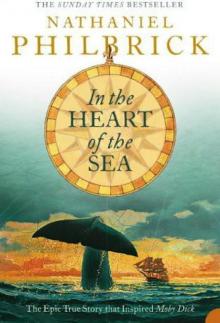 In the Heart of the Sea: The Epic True Story That Inspired Moby-Dick
In the Heart of the Sea: The Epic True Story That Inspired Moby-Dick Away Off Shore: Nantucket Island and Its People, 1602-1890
Away Off Shore: Nantucket Island and Its People, 1602-1890 The Mayflower and the Pilgrims' New World
The Mayflower and the Pilgrims' New World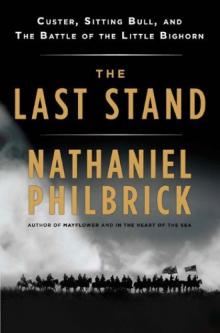 The Last Stand: Custer, Sitting Bull and the Battle of the Little Big Horn
The Last Stand: Custer, Sitting Bull and the Battle of the Little Big Horn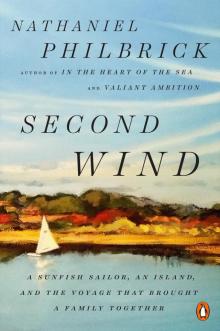 Second Wind
Second Wind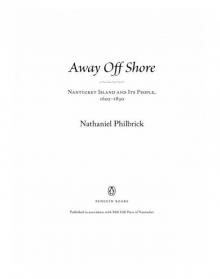 Away Off Shore
Away Off Shore The Mayflower and the Pilgrims' New World*
The Mayflower and the Pilgrims' New World*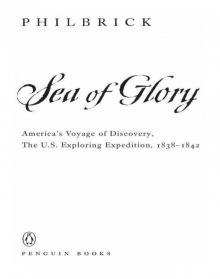 Sea of Glory
Sea of Glory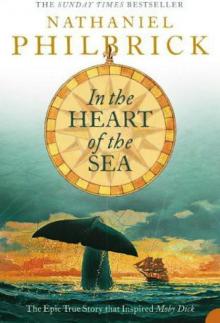 In the Heart of the Sea
In the Heart of the Sea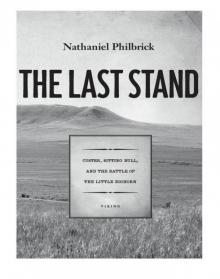 The Last Stand
The Last Stand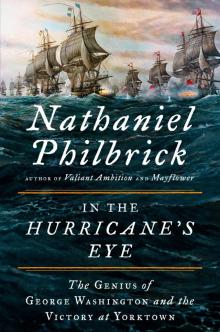 In the Hurricane's Eye
In the Hurricane's Eye